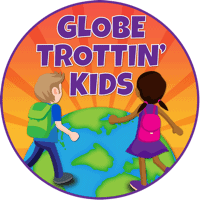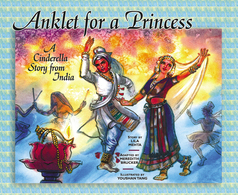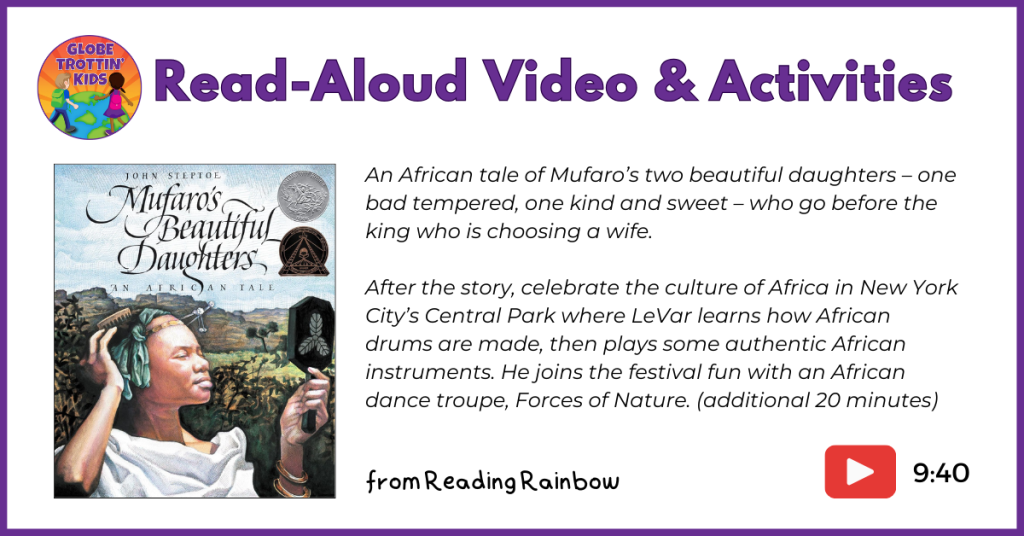Beyond the Glass Slipper: Cinderella Stories Around the World
Cinderella is a timeless tale that has enchanted generations of children around the world. The origins can be traced back thousands of years, with variations of the story appearing in cultures across the globe reflecting their own cultural traditions and values.
Many versions of Cinderella share common themes, such as changing luck or fate and kindness and love triumphing over evil and greed, but their cultural details vary.
In India, Cinduri loses her anklet when quickly departing the Navaratri Festival. In West Africa, a magic gourd helps Chinye overcome her obstacles, and in a Native American version of the tale, it is a chief that the protagonist marries.
Explore and compare Cinderella stories around the world!
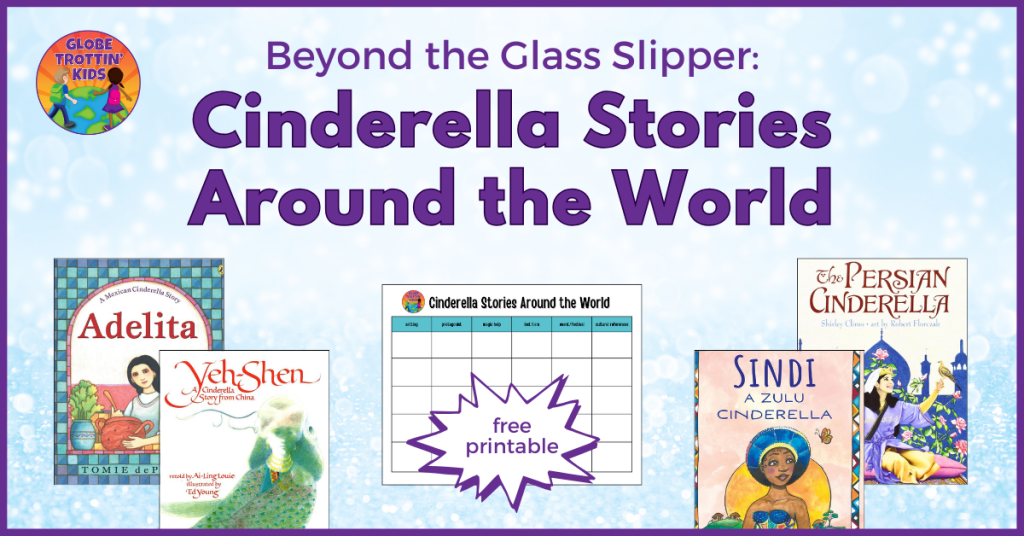
Disclosure: This post contains affiliate links. By clicking through and making a purchase, we receive a small commission at no extra charge to you. All proceeds help support our free global education website. Thank you!
Cinderella Stories Around the World
*It is highly encouraged to familiarize yourself with the plot, language, and cultural elements of the books before sharing them with children.
(France) The classic version popularized by Charles Perrault in the 17th century features a kind-hearted girl who is mistreated by her stepmother and stepsisters but ultimately finds happiness with the help of her fairy godmother.
This version of Cinderella, translated and illustrated by Marcia Brown, is a favorite.
Aschenputtel (Germany): This version of Cinderella, popularized by the Brothers Grimm, features a young girl named Aschenputtel who is aided by a magical tree planted on her mother’s grave.
Cendrillon (Caribbean): Influenced by French colonization, this version tells the story of a girl named Cendrillon who is helped by her godmother to attend a ball thrown by the king.
The Orphan: A Cinderella Story from Greece (Greece): A girl mistreated by her stepmother and stepsisters manages to captivate the prince at the village church, with help from Mother Nature.
The Golden Sandal (Iraq): In this Middle Eastern version of Cinderella, a kind girl named Maha is helped by a magic fish to attend a wedding where she captures the heart of a prince.
The Persian Cinderella (Persia): Settareh receives the help of a pari (fairy) living in a magical blue jug to attend the No Ruz (New Year) celebration at the Royal Palace.

The Rough-Face Girl (Native American): This Algonquin version of Cinderella follows the story of a young girl and her two beautiful but heartless sisters competing for the affection of the Invisible Being.
Sootface An Ojibwa Cinderella Story (Native American): The kind and honest heart of Sootface gives her the ability to see the invisible mighty warrior looking for his bride.
Adelita (Mexico): A beautiful young woman named Adelita disappears from a fiesta at midnight leaving only one clue behind, a beautiful rebozo (shawl).
Domitila A Cinderella Tale From the Mexican Tradition (Mexico): Young Domitila’s kind nature and delicious cooking of nopales win her the love of the future Governor.
Yeh-Shen A Cinderella Story from China is one of the earliest known versions of Cinderella. A young girl mistreated by her stepmother, Yeh-Shen’s only friend is a fish with golden eyes. When the stepmother kills the fish for dinner, poor Yeh-Shen is left with only the bones. But the bones are filled with a powerful spirit that grants her gifts to attend the annual Spring Festival.
*Check out our Yeh-Shen Reading Response Activities.
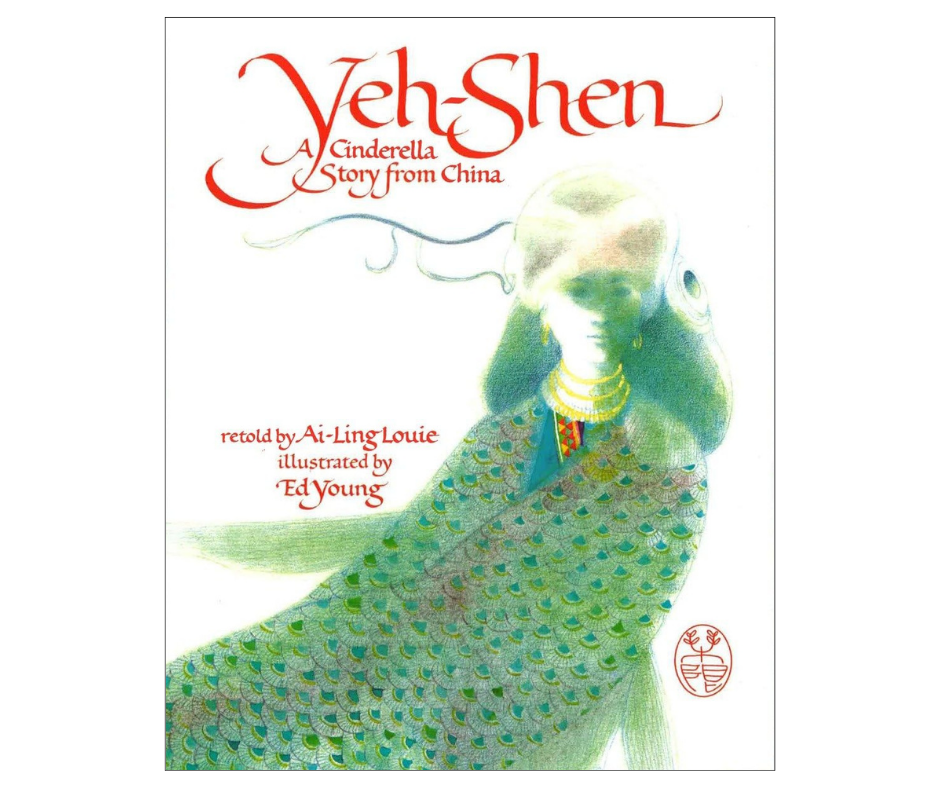
The Korean Cinderella (Korea): When her mother dies, the beautiful Pear Blossom is forced to perform all the chores while her stepsister Peony sits and does nothing. With help from magical creatures called togkabis, Pear Blossom overcomes obstacles and finds her “happily ever after.”
Angkat The Cambodian Cinderella (Cambodia): In this version, the Spirit of Virtue helps a poor young girl marry a prince and then helps return her to life after her family kills her from jealousy. Angkat becomes queen and banishes her family from the kingdom of Cambodia forever.
Jouanah (Laos): A young Hmong girl overcomes hardship and finds happiness with the help of her dead mother’s spirit and a pair of special sandals.
Anklet for A Princess (India): Poor, hungry Cinduri receives help from Godfather Snake to meet the prince during the annual Navaratri Festival.
Tam & Cam (Vietnam): Tam and Cam are stepsisters, and Tam is aided by a magical fish to attend a festival where the prince falls in love with her.
Cinderella An Islamic Tale (Medieval Andalusia): An orphan girl Zahra is left to work for her cruel stepmother and selfish stepsisters until a mysterious old woman helps her attend the Eid party at the palace.
The Egyptian Cinderella (Egypt): Based on the ancient tale of Rhodopis, this version follows the story of a Greek slave girl who finds love and happiness in ancient Egypt.
Chinye A West African Folktale (Nigeria): Chinye lives with her cruel stepmother and lazy stepsister, but her life changes for the better when a mysterious old woman in the forest directs her to a magic gourd.
Sindi: A Zulu Cinderella (South Africa): A grandmother’s wisdom, a young girl’s courage, and a touch of magic lead to attending the Zulu Reed Dance and a chance at finding true love.
*This book contains web access details to exclusive worksheets for grades 2, 3, and 4. All worksheets and activities were designed to align with Common Core State Standards.
Mufaro’s Beautiful Daughters (Zimbabwe): Two very different sisters, Manyara and Nyasha, embark on a journey to marry the king. Who will he choose?
Cinderella Around the World Activities
- Discuss why different cultures have their own versions of the same classic story.
- Share which version is your favorite, least favorite, most exciting, best characters, most clever, interesting setting, etc.
- Compare and Contrast Stories: Analyze the similarities and differences between characters, setting, and plot elements. Print our free graphic organizer.
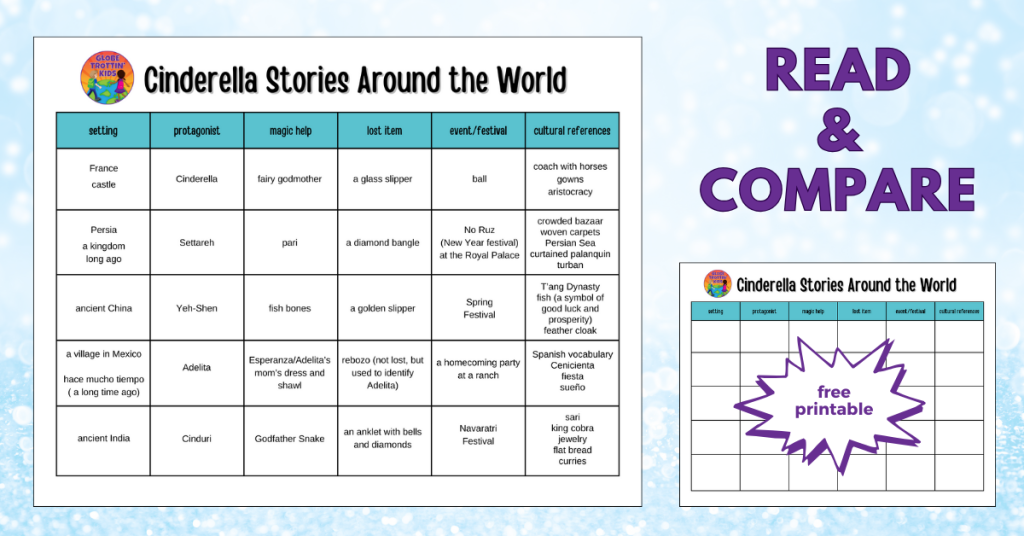
- Identify Cause-and-Effect Relationships: For example, Cinderella and the prince get married because the glass slipper fits Cinderella’s foot.
- Explore Further: Locate the setting of the story on a world map. Identify bordering countries and bodies of water. Research cultural details of the story: clothing, food, language, animals, festivals, architecture, spiritual beliefs, etc.
- Create a Cinderella Story: Promote creativity and cultural awareness by writing and/or performing an original Cinderella story set in a different culture or period.
Exploring Cinderella stories from around the world offers children a window into the diverse cultures and traditions that make up our world. By engaging with these stories, students develop a deeper understanding and appreciation for different cultures and hone their critical thinking, creativity, and empathy skills.
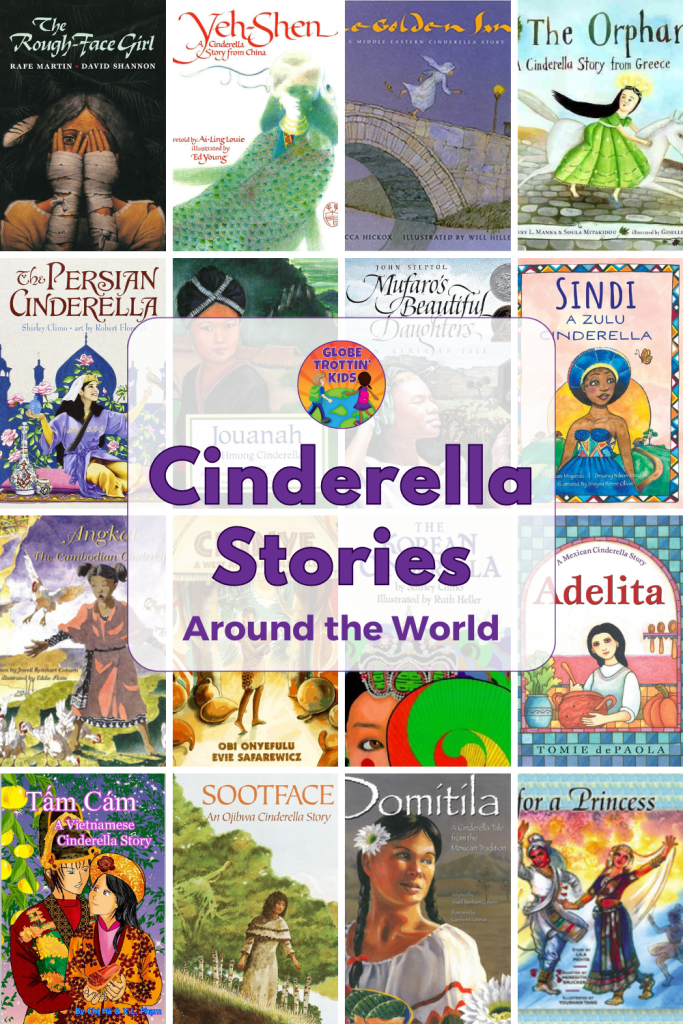
Discover more folktales and multicultural books!
